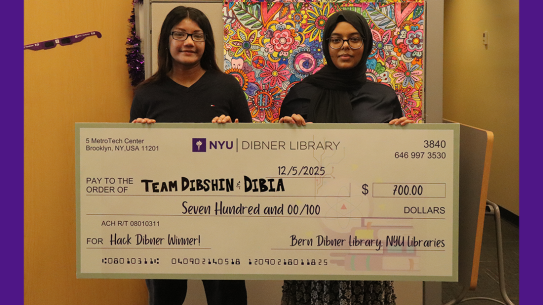Spiropyran-functionalized photochromic nylon webbings for long-term ultraviolet light sensing
This research was performed under the direction of Maurizio Porfiri, Institute Professor of Mechanical and Aerospace Engineering, Biomedical Engineering, Civil and Urban Engineering and incoming Director of the NYU Center for Urban Science and Progress (CUSP) at NYU Tandon. Collaborators were Peng Zhang, former researcher in Porfiri’s group and now faculty member at Tennessee Tech, and John Ohanian, research scientist at Luna Innovations.
Webbing structures — from chin straps and parachute material, to space habitats — are extensively employed in engineering systems as load-bearing components. They are frequently subjected to extended ultraviolet (UV) light irradiation, which can affect their integrity and reduce their mechanical strength. Despite technological advancements in structural health monitoring, long-term UV sensing techniques for webbings remain under-developed.
In the study, "Spiropyran-functionalized photochromic nylon webbings for long-term ultraviolet light sensing," published as the lead research (and featured cover) in the Journal of Applied Physics, the investigators explored an enticing solution: a photochromic nylon webbing that, because it comprises spiropyran (SP) functionalized polymers, demonstrates color variation in response to extended UV exposure with controlled, color variation over multiple time scales that is conducive to UV sensing.
The team developed a mathematical model grounded in photochemistry to interpret experimental observations, unveiling the photochromic phenomenon as a multi-step, multi-timescale photochemical process involving several chemical species offering the basis for the inference of the webbing’s color
In their research, the team found that the decay rate of the webbings’ color demonstrated a dependence on the initial concentration of the SP dye. Webbings with the lowest dye concentration maintained sensitivity for four weeks, whereas at the highest dye concentration, they exhibited sensing capability after eight weeks. Thus dye concentration could be customized to meet the lifetime of the targeted applications.
The proposed photochromic webbing and the photochemistry-based mathematical model could inform future designs of UV-sensitive structures that maintain sensitivity under weeks of continuous sunlight UV exposure.





